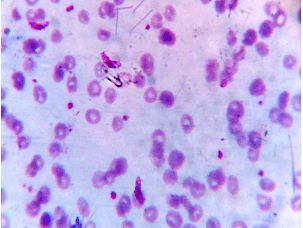STRUCTURE-BASED DESIGN OF NOVEL PYRIMIDINE CARBONITRILES ANALOGS TARGETING THE CYSTEINE PROTEASE FALCIPAIN 2 OF PLASMODIUM FALCIPARUM (pfFP2) AT THE TROPHOZOÏTE STAGE WITH FAVORABLE ADME SPECIFICITIES
Keywords:
ADMET, CNP, FP2, Malaria, pharmacophore, QSAR, virtual screeningAbstract
Aim and Objective: Structure-based drug design (SBDD) of new antimalarials at the moment of resistance of the most causative agent, Plasmodium falciparum to the more valuable artemisinin combination therapy (ACT) is even more urgent. Carbonitriles pyrimidine derivatives (CNP) has emerged as potential inhibitors of the cysteine protease falcipain 2 of Plasmodium falciparum (pfFP2), so here we report virtual pharmacophore based screening of the CNP chemical subspace yielding novel CNP analogs with predicted high inhibitory potency against pfFP2.
Methods: A quantitative structure activity relationships (QSAR) complexation model has been developed from a series of fifteen carbonitriles pyrimidine derivatives to establish a linear correlation between the calculated Gibbs free energies (GFE: ΔΔGcom) of pfFP2-CNP complex formation and the experimental half-maximal enzymatic inhibition concentration ( ).The predictive power of the QSAR model was then validated with the generation of a 3D-QSAR-PH4 pharmacophore (PH4) model as CNP chemical subspace (exemplified as a virtual combinatorial library of more than 83.300 CNP analogs) explorer for novel predicted more potent CNP analogs. Finally the best PH4 hits were evaluated with the initial QSAR model for predicted potency ( ) and pharmacokinetic profile.
Results: The QSAR model linear correlation equation: p = -0.1025 x ∆∆Gcom + 7.2867, R2=0.94, the subsequent PH4 model linear correlation between experiment and PH4-estimated IC50: p = 0.9366 x p + 0.2849, R2=0.91 documents the high predictive power of this approach. Finally the screening of the virtual library of CNP analogs yielded 52 orally bioavailable candidates the best reaching a predicted potency ( ) of 14 pM and displaying favorable pharmacokinetic profile.
Conclusion: The combined use of one descriptor complexation QSAR model and 3D-QSAR Pharmacophore model performs well in identifying novel CNP analogs against pfFP2 and the handful of top predicted analogs are worth undergoing synthesis and biological evaluation.

Peer Review History:
Received: 6 August 2023; Revised: 9 September; Accepted: 26 October; Available online: 15 November 2023
Academic Editor: Prof. Dr. Gorkem Dulger , Duzce University, Turkey, gorkemdulger@yandex.com
, Duzce University, Turkey, gorkemdulger@yandex.com
Reviewers:
 Prof. Hassan A.H. Al-Shamahy, Sana'a University, Yemen, shmahe@yemen.net.ye
Prof. Hassan A.H. Al-Shamahy, Sana'a University, Yemen, shmahe@yemen.net.ye
 Prof. Cyprian Ogbonna ONYEJI, Obafemi Awolowo University, Ile-Ife, Nigeria, conyeji@oauife.edu.ng
Prof. Cyprian Ogbonna ONYEJI, Obafemi Awolowo University, Ile-Ife, Nigeria, conyeji@oauife.edu.ng
 Dr. U. S. Mahadeva Rao, Universiti Sultan Zainal Abidin, Terengganu Malaysia, raousm@gmail.com
Dr. U. S. Mahadeva Rao, Universiti Sultan Zainal Abidin, Terengganu Malaysia, raousm@gmail.com
 Dr. Hayriye Eda Şatana Kara, Gazi University, Turkey, eda@gazi.edu.tr
Dr. Hayriye Eda Şatana Kara, Gazi University, Turkey, eda@gazi.edu.tr
Downloads

Published
How to Cite
Issue
Section

This work is licensed under a Creative Commons Attribution-NonCommercial 4.0 International License.









 .
.